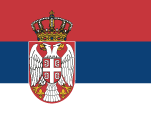The goal of the education reform in Serbia is to incorporate our universities into the unique education system promoted, among others, by the Bologna process.
The principal new feature in the reform of higher education in Serbia is the application of the European Credit Transfer and Accumulation System (ECTS). This system provides transparency in relation to other education systems and the labor market; it also enables more efficient mobility of students in Europe.
Recognizing degrees and study programs is a prerequisite for creating a modern, open European education process; this is precisely what led to the formation of ECTS.
The implementation of ECTS encourages each higher education institution to reform its education programs, thus increasing flexibility in the domain of education and the diversity of the skills attained, along with introducing changes to the organization of teaching itself directed towards increasing the efficiency of the studies.
ECTS is a universally accepted system for communication between higher education providers and institutions in the European education space.
ECTS is based on three main elements:
- credible information about higher education institutions which provide access and an overview of teaching programs and other general study requirements to potential partner institutions and students
- information on the study program attended by the students and their achievement
- contract between a partner institution and the student, which recognizes the program previously attended or completed by the student in a higher education institution
ECTS credits are numerical values, given to subjects so as to express the amount of workload students require to complete a part of their program. They provide the quantity displaying the workload required by the student in order to complete one academic year (1-60 credits), i.e. lectures, exercises, practical work, consultations, seminars, independent learning and exams.
The ITS curriculum stipulates the application of ECTS standards in measuring the performance of students throughout their studies. We have, therefore, used all the elements of the evaluation system based on ECTS standards.
When calculating the number of points according to ECTS standards, ITS takes into account two standpoints and the standards prescribed by the procedures concerning the allocation of ECTS credits:
- one academic year is 60 credits
- one semester is 30 credits
- the student participates in lessons, lesson preparation, term papers and so on, no more than 8 hours per day, i.e. 40 hours per week.
At ITS, each subject is assigned a number of ECTS credits. The application of ECTS credits gives an insight into the assessment of the overall workload regarding a segment of the study program, but it doesn’t say if and how much the student has mastered specific materials.
Student achievement is measured in both traditional grades and those corresponding to the ECTS system.
